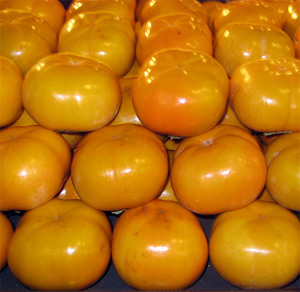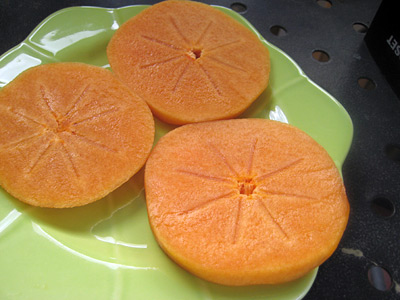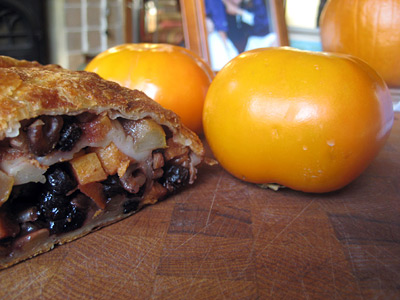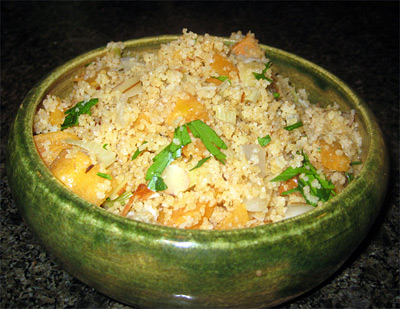 Many people seem a bit confused by persimmons. Do you cook them or eat them raw? Are they bitter or sweet? How do you eat them? It seems that whenever I buy some, either the person next to me in line or the cashier quizzically looks over and asks what I'll do with them. Everyone seems to have heard a story about some brave soul who tried one and was rewarded with a mouthful of astringent yuckiness.
Many people seem a bit confused by persimmons. Do you cook them or eat them raw? Are they bitter or sweet? How do you eat them? It seems that whenever I buy some, either the person next to me in line or the cashier quizzically looks over and asks what I'll do with them. Everyone seems to have heard a story about some brave soul who tried one and was rewarded with a mouthful of astringent yuckiness.
Contrary to popular belief, only one type of persimmon is astringent when unripe -- the Hachiya persimmon. I won’t discuss the Hachiya today, other than to say that it is sugary and bursting with flavor when ripe and is the perfect base for puddings and fruit butters. Rather, I want to focus on the Fuyu, which is non-astringent, has a sweet and gentle flavor, and is often grown locally. It also happens to be delicious.
Fuyus are shaped like tomatoes and can range in color from light to deep orange. And, unlike Hachiyas, they can be firm when ripe (like an apple). You can cook with them or eat them raw. They’re great all by themselves as a fruit snack, can be cooked into stews or pies, or included raw in salads. Although you can wait until Fuyus get soft before you eat them, I think they are best when firm and crisp. They are also quite pretty when sliced as their seed holes make a natural star pattern. Just make sure they’re not too light in color (and definitely not greenish) as they’re only sweet when ripe.

Persimmons are available all over the Bay Area this time of year. In addition to finding them at farmer’s markets and in grocery stores, you may also see them hanging from neighbors' trees on walks around your block as they are a popular yard tree. (Not that I am advocating stealing your neighbors' fruit. Just knock on their door and ask if you can have a few if they have an abundant crop. Chances are they aren’t eating the fruit anyway.)

